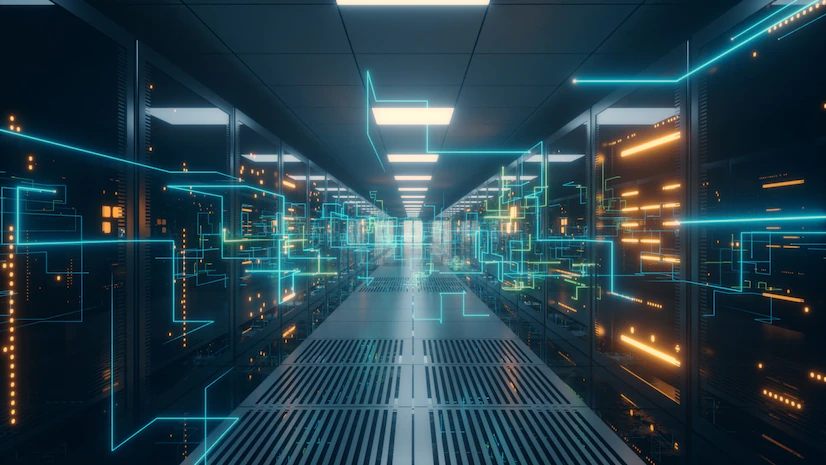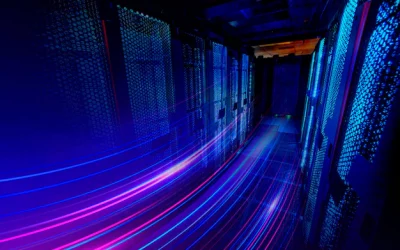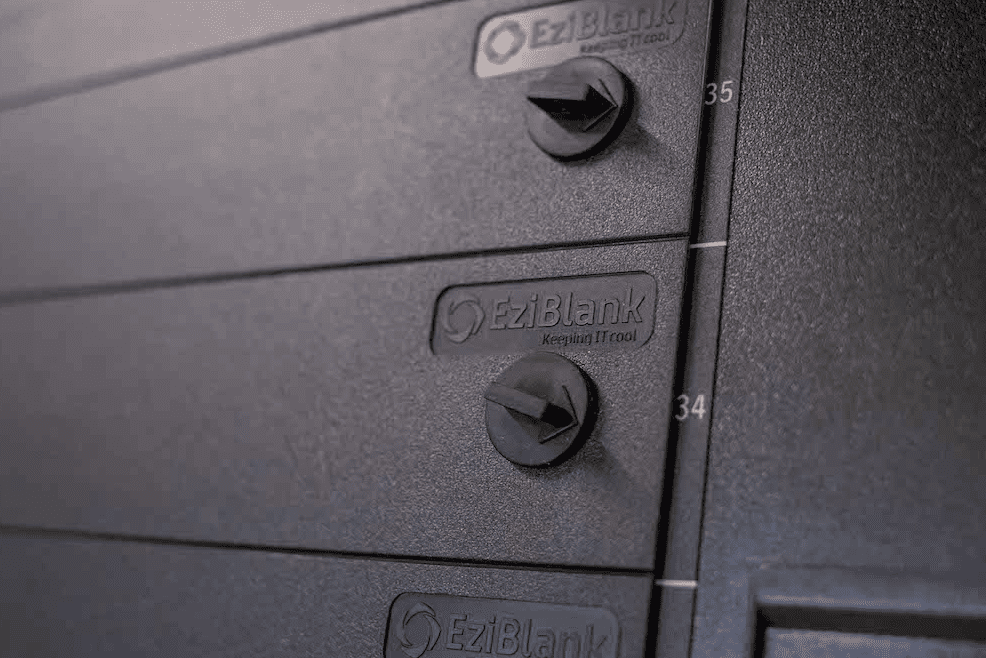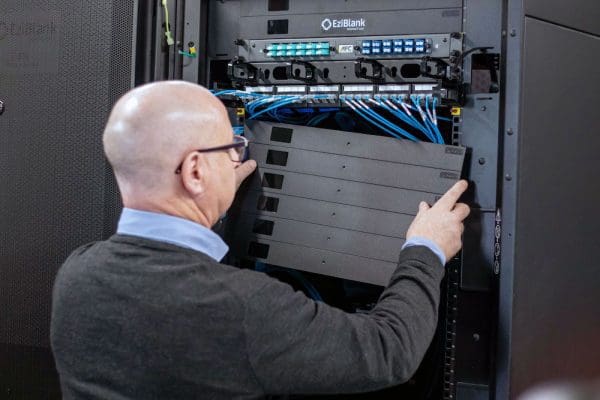Guide to setting up a Data Center
Today, businesses of all sizes are turning to self-hosted data centers as a safe and secure way to protect their information. Not only are self-hosted data centers more secure, but they can also create backups quickly and efficiently. By having a data center in-house, businesses can ensure that their data is always safe.
While setting up a data center can seem like a daunting task, with the right information it can be a breeze. In this article, we will provide you with what you need to set up your very own data center. We’ll go over everything from choosing the right location to what security measures you need.
So whether you’re just getting started or you’re ready to take the plunge, read on for our complete guide to setting up a data center!
In the article:
[—ATOC—]
[—TAG:h2—]
Location and Layout
One of the first steps when it comes to setting up data centers is to determine the location. Start by assessing your needs and decide how much space you will need. When choosing a location for your data center facility, it is also important to consider the climate. The data center must be in a cool and dry environment, as overheating and humidity can damage the equipment.
Once you’ve chosen a location, it’s time to start thinking about your data center design. First and foremost, the layout should be safe and as simple as possible, making sure that everything is easy to access. One of the biggest mistakes people make when setting up a modern data center is overcomplicating the layout and cramming too much equipment into a small space. This can lead to overheating and damage.
Another mistake is trying to design the perfect data center right from the start. In reality, it’s important to choose a layout that is scalable so that you can be flexible and adapt as your needs change. Don’t be afraid to make changes as your business grows.
When planning your data center, you should also think about the cost. This includes the cost of the layout and also the equipment and maintenance cost. As well as the initial setup, you should allocate budget for future growth. This will help ensure that your data center can grow with your organization.
Equipment
When thinking about layout, you should also plan out all the components that go into data centers, including the amount of server space you have. If you have a limited amount of space, you may want to consider using blade servers as opposed to traditional rack servers. Blade servers are thin and take up less space, and are therefore perfect for businesses that are short on space.
If choosing a rack server, you must then consider the different types of server racks available. The first thing to think about is the size of the rack. It’s important to make sure that the rack will fit all of your servers, as well as any other equipment you may want to store. Additionally, you need to make sure that the rack is strong enough to support the weight of all of your equipment.
Cloud Data Centers
Another option you may want to explore is a cloud data center. This type of data center is not physically located on your premises, but instead, housed by a third-party provider. These have become increasingly popular in recent years, as they offer a number of advantages over traditional data centers. This includes scalability and ease of management. Additionally, they are perfect for businesses that are short on space or that need to be able to quickly adapt to changing needs.
Another big advantage is that they are cheaper to operate. This is because you only pay for the resources you use, and you don’t have to worry about buying the hardware or maintaining the physical infrastructure. This can be a big saving for businesses that don’t need a lot of storage capacity.
If you’re thinking about setting up a cloud data center, there are a few things to keep in mind. First, make sure you have a good internet connection. Your own server cloud will rely on the internet to function, so you need to make sure your connection is reliable and fast. Next, you need to decide how much storage capacity you will need. This depends on the type of business you have and how much data you need to store.
There are a number of different options available, so it’s important to find one that meets your needs and budget.
Ventilation and Cooling
One of the most important aspects of data center design is making sure that you manage airflow and have a good ventilation system. This is because overheating can damage the equipment and cause data loss. Many data centers can fail to prevent the buildup of heat or humidity, which then causes damage to the equipment.
When thinking about ventilation, there are a few things you need to consider. Firstly, the racks and equipment should be placed in a way that allows for optimal airflow, and there should be plenty of space between them. Additionally, you need to make sure that the ventilation system is powerful enough to move air throughout the entire data center. There are a number of products available to you to help with airflow management, so be sure to do further research to learn more.
As well as ventilation, it is also important to control the temperature in the data center. This can be done with a range of different devices including air conditioning and water cooling systems.
Additionally, you may choose to use an aisle containment system for enhanced cooling effectiveness and efficiency. This can be done by using a hot aisle containment system . This system prevents hot air from spreading to other parts of the data center, which can cause the equipment to overheat. Alternatively, you could choose to use a cold aisle containment system , where cold air is contained within a cool aisle.
While most data centers employ a hot aisle containment system, it depends on your specific data center and budget as to which is the best.
Power
Power is another important aspect of data center design. It’s essential to have a reliable and continuous power supply in order to keep the data center running. This means that you need to have a good backup system in place in case of power outages. You should also make sure that the power is properly distributed throughout the data center so that all of the equipment can be powered up.
There are a number of different ways to provide power to a data center. The most common way is to use PDUs, or power distribution units. These units allow you to distribute power evenly throughout the data center. They also help to protect the equipment from power surges and spikes.
Another way to provide power is through generators. Generators are a good backup system in case of a power outage, and they can also be used to provide backup power during peak demand. When selecting a generator, you need to make sure that it’s big enough to handle the load. Additionally, you need to make sure that it’s in a safe location and that it’s easy to access.
Data Center Tiers
When thinking about data management, it’s important to understand the different tiers. There are four tiers, in order from worst performing to the best performing, however, depending on the needs of your business different tiers may be appropriate.
A Tier I data center is the most basic and designed for small businesses and branch offices. It must have uninterruptible power supplies (UPS) and generators but offer limited storage and bandwidth, and don’t have any redundant systems in place. These have an expected uptime of 99.671% (28.8 hours of downtime per year)
Tier II data centers are designed for medium-sized businesses. They offer more storage and bandwidth than Tier I data centers, and they have some redundant backups in place. By having redundant components, in the form of multiple processing channels, if one system fails, the data can still be accessed through another channel. These have an expected uptime of 99.741% (22 hours of downtime per year).
Tier III data centers are designed to provide a higher level of availability and reliability.These have multiple backup systems in place and are able to withstand a number of failures. They also have multiple paths for power and cooling which allows them to operate in the event of a power outage or cooling failure. These have an expected uptime of 99.982% (1.6 hours of downtime per year).
A Tier IV data center is the most reliable and usually employed by government organizations and large businesses. They have the most redundant systems in place, which means that they can withstand multiple failures. Tier IV data centers are also the most expensive, and require the highest level of infrastructure. These has an expected uptime of 99.995% (26.3 minutes of downtime per year).
Generally, for small data centers, a lower-tier data center would be best, whereas for larger data centers such as for government organizations, Tier IV may be necessary.
Compliance and Support
When setting up a new data center, it is important to have a good support system in place. This includes having a team of experts who can help you with everything from designing the data center to installing the equipment. This team can also help you troubleshoot any problems and restore your data as quickly as possible.
In addition, you should have a designated compliance officer who is responsible for ensuring that the data center is in compliance with all of the relevant regulations. This includes industry-specific regulations as well as general compliance requirements such as GDPR. You should have a plan in place for meeting all of the compliance requirements. This plan should include the security measures that you will put in place, as well as the procedures that you will follow for data backup and restoration.
Security
When setting up a data center, security is of utmost importance. You need to make sure that you have the right security measures in place to protect your data from unauthorized access. This includes installing security cameras and locks on doors, as well as hiring security guards to patrol the premises.
You should also password protect your data center so that only authorized personnel can access it. In addition, you should create backups of your data so that you can restore it if it is ever compromised.
Make sure that you keep your security measures updated so that they remain effective at protecting your data. And be sure to test them regularly to ensure that they are working properly.
Setting up your Data Center
While setting up a data center can be a daunting task by following the tips in this guide, you can make sure that your data is safe and secure. In addition, be sure to have a good support system in place so that you can get help when things go wrong. And lastly, make sure to keep your security measures updated so that your data remains safe and protected.
For more information on setting up your data center, call our experts today.




